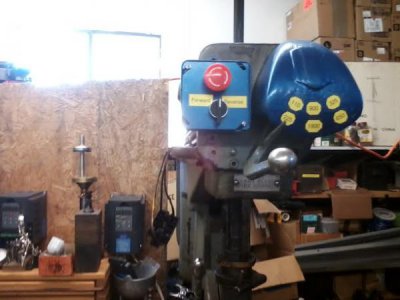- Joined
- Jan 1, 2018
- Messages
- 1,153
I like to use a cut off switch on my VFD's and a power light. Many machines don't get used often enough to leave them on all day every day when I am only working in my shop on the weekends and might or might not be using a particular machine. When the shop lights go out the power lights make it obvious that something still has power. To me a cut off switch is a lot more convenient than pulling the plugs or cutting the breakers that are not very conveniently located. Before the cut off switch and power indicator I would pull the plug after every use so I wouldn't leave the VFD running... that was a pain in the rear!
If I used a machine on a daily basis I would have no problem leaving the VFD's powered.
If I used a machine on a daily basis I would have no problem leaving the VFD's powered.


